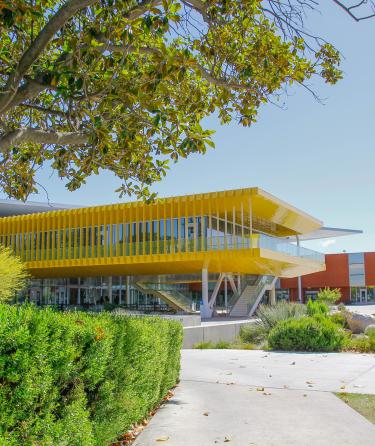Duty Administrator
This checklist is for the use of the Administrator in charge of the campus during a major emergency. The use of this checklist will help the administrator make critical decisions in the start-up and operation of the level of necessary response by the college to an emergency. The Administrator should mobilize a Crisis Action Team as shown below. If the listed members are not available the administrator may contact them by phone or create a secondary CAT group to help assist with decision making and planning.
IMMEDIATE ACTION CHECKLIST
Pre EOC Activation
For use by LAVC Crisis Action Team
Mobilize members of the Crisis Action Team (CAT)
- Los Angeles Valley College President (818) 947-2321
- Los Angeles Valley College Vice President, Administrative Services (818) 947-2336
- Los Angeles Valley College Facilities Manager (818) 947-2301
- Los Angeles Valley College Public Information Officer (818) 947-2433
- Los Angeles Valley College Deputy Sheriff (818) 947-2911
*Night Duty Administrator: Academic Affairs Dean
*Night Duty Administrator: Custodial Supervisor
*In the event there are no Senior Administrators on campus the Duty Administrator will take responsibility for the college response in the event of an emergency.
EOC Activation Criteria – Should the EOC be activated?
This decision must be based on the emergency event or situation. The primary Los Angeles Valley College EOC is located in the M&O Conference Room. The alternate EOC is located at the LAVC President’s Conference Room. In the event of an emergency where a limited area of the campus is affected the Lead Administrator may elect to use the Emergency Response Vehicle and monitor the situation at the site.
Key factors that normally trigger EOC activation include:
- Emergency response resources beyond the capabilities are required of local first responders
- An emergency of a long duration
- Major policy decisions must or may be required
- A local or state of emergency will be declared
- Activation of the EOC will be advantageous to the successful management of the emergency
EOC Activation Criteria - At what level should the EOC be activated?
Communicate and notify the President or VP Administrative Services of your situation
It is important to activate the LAVC EOC at an appropriate activation level to manage the emergency and to stay in control of the situation. The following information is provided to serve as a quick guide regarding when the activation of the EOC would be appropriate.
- Level 1 – Any incident which will not seriously affect the overall functional capacity of the college. Level 1 emergencies are those incidents that our Security Department handles routinely through normal security procedures. The LAVC EOC is not activated.
- Level 2 – Any incident that indicates threat to life, building structures, and/or overall operations of the college or one of its campuses. Normally help from outside emergency services is required. Major policy considerations and decisions are required from administration during the crisis. In the event of a level 2 emergency, LAVC Security notifies the President or any member of the Crisis Action Team, who then determines whether to request that the President/Acting President or Vice President for Administrative Services to activate the LAVC Emergency Operations Plan. The LAVC EOC may be activated at a partial or full level activation.
- Level 3 – An event or occurrence that has actually taken place and has seriously impaired or halted the operations of the college or one of its campuses. A coordinated effort of all campus-wide resources and outside emergency services is required. Major policy considerations and decisions will be required from administration during and following the crisis as operational functions resume. In all cases of a level 3 emergency, the President/Acting President or Vice President for Administrative Services will activate the LAVC Emergency Operations Plan. The LAVC EOC should be activated at a full level activation.
Notify the City of Van Nuys and/or the County of Los Angeles that the LAVC CAT is considering or has activated the College EOC. Identify and report LAVC’s:
- Existing situation
- Critical staffing needs
- Critical resource needs
Develop a presentation to give the members of the LAVC EOC Emergency Response Team. This essential brief is presented by the members of the Crisis Action Team and in the following sequence.
- Situation overview: A description of emergency situation and response actions already in progress. Normally presented by the Senior Security Department Official based on emergency.
- Emergency response actions underway: A description of actions accomplished by Crisis Action Team relating to initial notifications and coordination for life safety response efforts. Normally presented by the Senior Security Department Official based on emergency.
- Time period of 1st Operational Period: The identification of the beginning and ending times of the first shift for the LAVC EOC Emergency Response Team. Normally presented by the LAVC President or Vice President of Administrative Services.
- Objectives and Priorities for the 1st Operational Period. The identification of the Objectives and Priorities to be completed by the LAVC EOC Emergency Response Team during the 1st Operational Period. Use the Action Plan Worksheet Chart (refer to pages 3 and 4) to identify the Objectives and Priorities and to brief from. This last key portion of the brief is normally presented by the LAVC President or Vice President of Administrative Services.
NOTE: Upon completion of the Crisis Action Team brief to the EOC Emergency Response Team the Crisis Action Team disbands for the duration of the emergency response and key members of the Crisis Action Team become members of the LAVC Emergency Operations Center.
